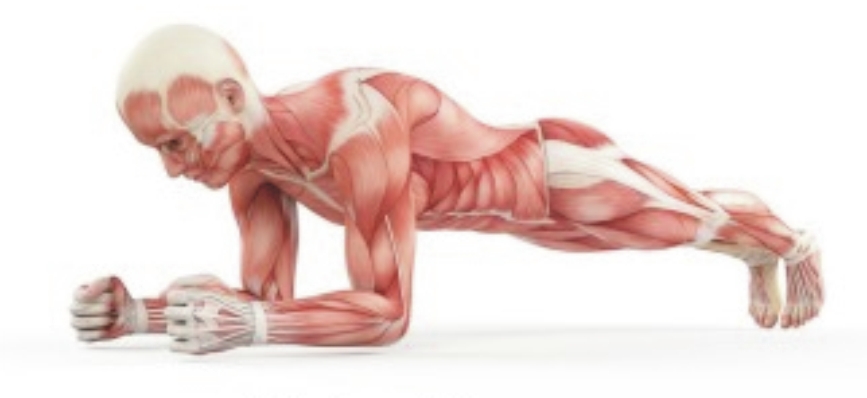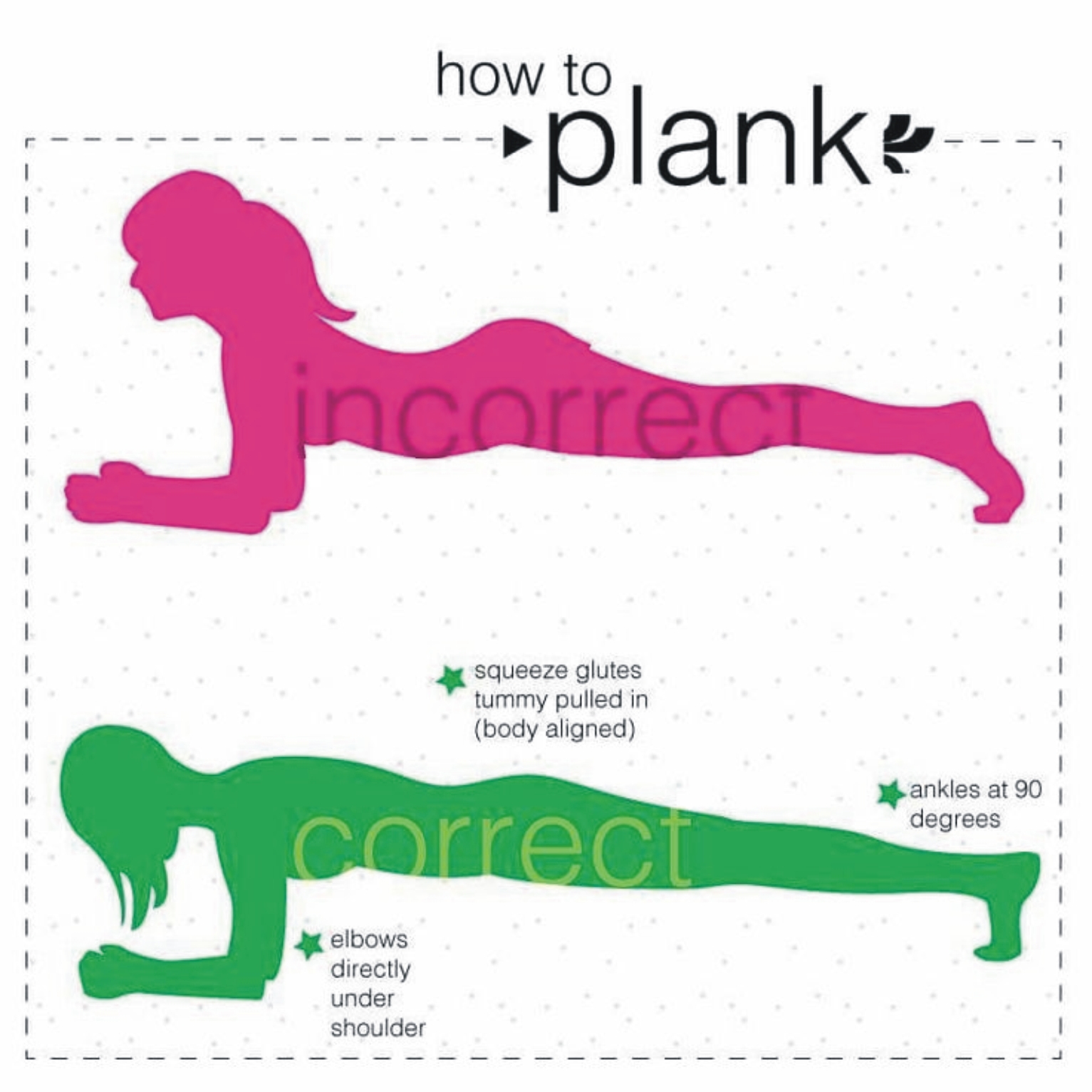Want a single exercise move that will give you rock hard abs? Build a hard core with this deceptively simple exercise.
Just one exercise at once activates all major core muscle groups:
- transverse muscle – it helps to raise a big weight;
- rectus abdominis – it helps to jump better, and it is also responsible for the “cubes”;
- oblique muscles – it extends the capabilities of the lateral tilt and twist at the waist;
- gluteal muscles – it supports the back and gives a beautiful profile.
Other Muscles involved:
- Back (especially the muscles by the spine and lower rib cage)
- Neck and shoulders (Rotator cuffs, Trapezius, Deltoids, and Rhomboids)
- Chest
- Butt
- Legs (calf muscles and quads)

I’ve had a lot of people ask me about how long to hold the plank exercise.
And I always say the same thing, “it depends.” You know, on your goals, conditioning level, which plank you’re doing, etc. It just depends. That said, there are some general standards you can use to gauge your performance. For example, Dr. Stuart McGill (PhD), who is a world-renowned spine biomechanics specialist and is considered a leading authority on core development, says that two minutes is a good goal to shoot for in the standard abdominal plank on your elbows. Holding the plank exercise for that long indicates that you have a reasonably strong core – and most others tend to agree with that assertion, myself included.
Also, a recent study on 168 college students found that your average college-aged female has a plank time of about 1 minute, 30 seconds, while an average college-aged male has a plank time of about 1 minute, 46 second. That said, you should know that most of these students were considered athletic to begin with, and they all volunteered for the study. Also interesting to note is that the longest plank time held by a female in that study was about 4 minutes. And the longest plank time held by a male was about 7.5 minutes. However, the researchers concluded that any time held for over 2 minutes (roughly) is considered excellent.
There’s no reason you have to settle for the 2 minute goal. Why not raise the bar and try for 3 minutes or even 5 minutes? That’ll put you in the upper echelon of performance and will give you a mega confidence boost – not to mention even better physical results.
If you’re aiming for core strength and you want to maintain good core strength a 2 minute plank is great, and there are lots of variations of plank you can have fun with. If you’re really badass and you want to keep going 5 minutes is freaking great, most people never go past 3 minutes so a 5 minute plank is just outstanding! There is always a benefit to pushing yourself further if you feel the need, and it’s always cool to see what your body is really capable of!
Important Point: 2 minutes may be considered excellent by some standards, but let’s keep in mind who is making those standards and how they’re doing it. Because as much as I hate to say it, as North Americans, we aren’t exactly the fittest people on Earth, if you know what I mean – even if you are an “athletic” college-aged student and some researchers in lab coats claim that you’re among the elite. Suffice to say that the standards have been lowered in recent times and what may be considered “excellent” nowadays was probably average or even below average in days past. Don’t forget that whenever setting your own fitness goals.
All that sounds amazing, but we still don’t know too many people who get excited about doing planks. Generally, you stare down your timer as the minute (or more) runs down. And while we’re being candid, let’s just come out and say it: Planks destroy your abs. For a pretty basic isometric exercise, planks strengthen your entire body — as mentioned earlier they make your core pop, strengthen your lower back, and build your shoulders.
Better yet, you don’t need any equipment, and you can amp up the intensity by widening your stance and bracing yourself with your hands instead of your forearms and elbows.
How to Plank
Get into pushup position on the floor.
Now bend your elbows 90 degrees and rest your weight on your forearms. Your elbows should be directly beneath your shoulders, and your body should form a straight line from your head to your feet. Hold the position for as long as you can. Your goal should be to hold it for two minutes.

The plank helps develop strength in the core, shoulders, arms, and glutes, making it a great prerequisite for lifting heavy weights or playing intense sports. Even though you aren't moving or lifting weight, you have to constantly squeeze your abs to hold the position—most people can't last 30 seconds on their first attempt.
Ways to Improve Your Plank Time
The longer you can hold the plank, the more resilient your lower back will be to injury, and the better your abs will look once you burn the fat off them.
If you don't have the core strength yet to do a regular plank, you can build up to it by doing a bent-knee plank. If you can hold a plank for more than two minutes with ease, you can move on to these tougher variations:
- Lift one leg up. By simply raising one leg in the air, you dramatically increase the demand on your core to fight your body's natural urge to rotate.
- Lift one arm up. Again, your body will want to fall to one side. Don't let it!
- Use a Swiss ball. Rest your forearms on the ball and you'll have to stabilize your body and stop the ball from rolling out from under you.
Happy planking!
And if you’re bored and want to see my longest plank, check out the video on YouTube: https://www.youtube.com/watch?v=kS1VTk1YFNM
- Log in to post comments